How to Choose the Best TV for Digital Menu Boards (2023)

January 27, 2023
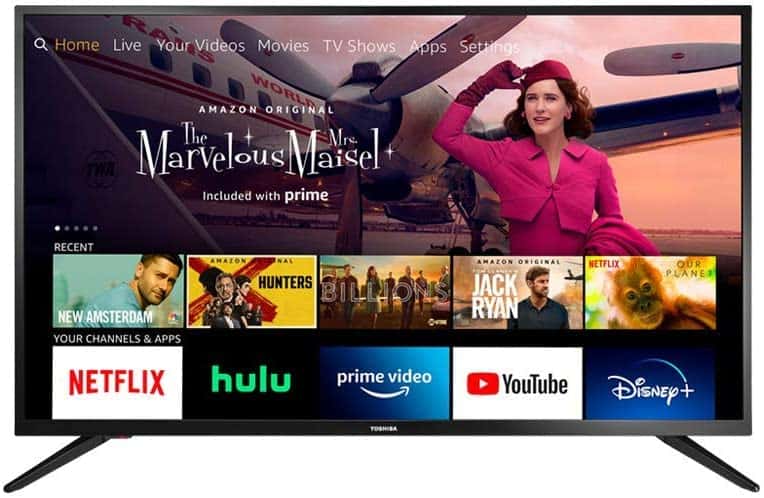
UPDATED: 1/27/23
As bars, breweries, and even restaurants have evolved, writing menus on chalkboards has become a thing of the past. Today, digital menu boards have become a streamlined, easy way to display what’s on tap, driving customer engagement and saving your team valuable time.
Digital menu boards can make an impression on your customers, ultimately adding to your bottom line. As one of the latest trends in digital signage, these boards can give customers a sleek, modern way to read what you have on hand and in stock.
While many establishments use a good ol’ fashion TV to show their offerings, there are plenty of options that are both reasonably priced and high quality. In fact, there may be too many options. But if the number of TVs on the market seem daunting, don’t fret.
We’ve sifted through the multitude of options to show you which ones are the best to display your menus.
After all, if you’re choosing to showcase some of the now three million beers in Untappd’s database on your digital menu board (as of 2023), you’ll want the best, most reasonably priced display.
What We’ll Cover in This Piece:
- Things to Consider When Choosing a TV for a Digital Menu Board
- LCD vs. LED vs. Plasma
- Resolution
- Screen Size / Layout
- Brand Name
- Warranty
- Required TV Ports
- Aesthetics
- Outdoor TV Screens
- The Best Time and Place to Buy a TV for a Digital Menu Board
- Untappd for Business’s Budget Picks for the 5 Best TVs for Your Digital Menu Boards
Things to Consider When Choosing a TV for a Digital Menu Board
Every establishment’s needs are a little bit different and in this article, we'll go through some of the most important things to consider.
LCD vs. LED vs. Plasma
The main difference between LCD and LED screens is the type of backlighting they use. LEDs use “light emitting diode bulbs” (hence LED) while LCDs use cathode fluorescent light bulbs (CFL). Plasma displays use plasma; they produce the highest contrast ratio but have many disadvantages that make them a less-than-ideal option for menu displays.
LCD is the most conventional--and, consequently--the most affordable option. On the other hand, LED screens provide a brighter, crisper image, use less energy, generate less heat, are typically lighter and thinner, and offer a number of various display options such as “edge-lit” or “local-dimming.”
You’ll need to decide if it's worth the extra expense to shell out for an LED screen. Many establishments may already have a standard LCD screen in use, so it might not be worth the additional cost to upgrade. But if you’re installing TVs for the first time, an LED version could be a better fit for your aesthetic.
Whatever you do, cross plasma off the list. While plasma may seem like a sleek option, these displays often experience screen burn, when an image left on the screen for a while leaves a residual impression. Plus, they’re often heavier, more expensive, and more fragile.
Resolution
The best high-definition (HD) displays range from 1024x768 to 3840x2160 resolutions. You might also see these sizes measured as pixels: 480P, 720P, or 1080P. The conversion works as follows:
- 1024x768 to 1366x768 = 720P
- 1920x1080 to 1920x1200 = 1080P
- 3840x2160 = 4K
While 720P works fine for many businesses, the industry standard is traditionally 1080P. At this resolution, you’ll find the crispest images. Additionally, 1080P is more compatible with media player hookups, allowing for more screen area to display information and better resolution.
Again, you can avoid the highest-priced option here: 4k resolution. It’s certainly buzzworthy, but honestly, for the extra bucks, your customers probably won’t see a difference between 4k and 1080P, especially if you’re only using the TVs for menus.
Screen Size / Layout
This decision will depend on the amount of space you have in your bar or restaurant. But a few things to keep in mind:
- How far will your customers be from the screen?
- How many items do you want to display on the screen?
- Where do you want to place your TVs?
It’s important to remember that people need to be able to read what’s on your digital menu. And they probably have to consume the information fairly quickly.
Ideally, your TVs should be no more than six feet from someone's eyes. Obviously, larger screens are easier to read and offer more screen room but might take up more space in your bar. Smaller screens are harder to read but could be easier to fit inside your establishment. If you’re caught between two sizes, go with the larger one. You could also get multiple smaller screens to display in convenient locations.
Brand Name
A word of caution here: avoid being seduced into buying a television simply based on the brand name. These days, parts and monitors might even come from rival companies… imagine an LG screen that uses Samsung hardware. The best thing to do here is compare TVs by individual specifications and model numbers and keep the brand name out of the picture. For example, compare a TCL 55R635 to a Sony X800H as opposed to a TCL to a Sony.
Warranty
A standard warranty on a TV usually lasts for one to two years. But you could extend that warranty if you purchase a TV with a certain credit card provider. Visa, MasterCard, American Express, and Discover all offer these types of deals, often extending your warranty to two to three years. If possible, we recommend leveraging a longer warranty, which will give any defaults more time to show.
Required TV Ports
If you’re running digital menus, you need an HDMI port. Luckily, it’s standard practice for any television to include this connection. If you’re using any type of digital menu software, you might also need a TV with an RS-232 port, so keep your eyes open for that.
Aesthetics
This decision revolves around the bezel, or plastic casing, that holds the TV screen. Generally, try and choose a display with a thinner bezel. They’re more expensive but you’ll have more screen space to dedicate to your menu. And aesthetically, they look better.
Outdoor TV Screens
Digital menu boards stationed outside require a few additional considerations. Weather and sunshine are both external factors for TVs that are outside. Temperature, humidity, rain, and other elements can all affect your outdoor display. To avoid this damage, you can buy an outdoor case to put around your indoor TV, or you can purchase a screen from a high-quality outdoor screen provider such as SkyVue.
Since it can be harder to read TV screens outdoors, you usually need brighter screens to be effective. For example, most indoor screens hit 250 cd/m2 (the measurement for screen brightness is candela per square meter). But for outdoor displays, you want at least 700 cd/m2.
Also, if you have an outdoor screen, make sure it’s carefully secured. Outdoor screens can make easy targets for theft.
Check out a demo of Untappd for Business Digital Menu Boards
The Best Time and Place to Buy a TV for a Digital Menu Board
Where should you buy a TV? There’s no easy answer. But standard sites and stores such as Amazon, Best Buy, and Costco are great places to start your search.
If you’re looking for a peak time to buy your TV, think about making your purchase around major consumer shopping holidays such as Black Friday or Cyber Monday. All three of the aforementioned locations tend to have deals around electronics during those peak shopping seasons.
Untappd for Business’s Budget Picks for the 5 Best TVs for Your Digital Menu Boards
We’ve done some of the initial legwork for you. Here are some of the best deals we found for TVs from both Amazon and Best Buy.
Toshiba 32LF221U21 32-inch Smart HD 720p TV - Fire TV (Released 2020)
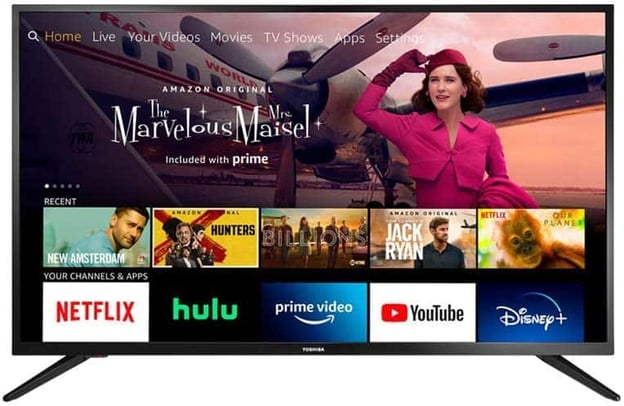
This is your budget-friendly, basic option. Is it affordable? Yes: only $140. While it might not be the highest grade, if you just need a workhorse TV, then this is the gold standard. With a 32-inch screen, this TV is on the smaller side, and with 720P you’re getting the standard resolution. So, consider this your no-frills choice.
Price: $139.99. Normally $199.99 but on sale right now via Amazon.
Insignia NS-43D420NA20 43-inch Class N10 Series LED Full HD TV
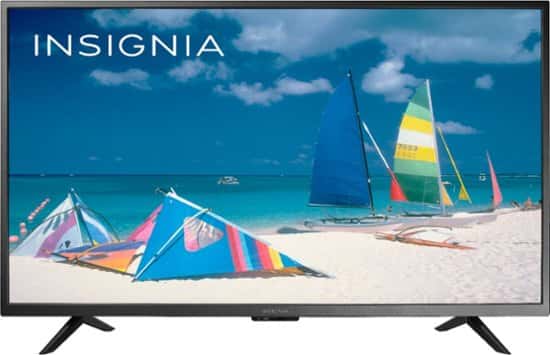
If you’re looking for a bit of an upgrade from the Toshiba, this Insignia model is perfect. Even though it has 1080P resolution and a generous 43 inch screen, it still costs under $200. Affordable, good quality, clear, and sharp, this TV will do the trick for a variety of spaces.
Price: $179.99. Normally $239.99 but on sale right now at Best Buy.
New Insignia NS-42F201NA22 42-inch F20 Series Smart Full HD 1080p Fire TV (Released 2021)
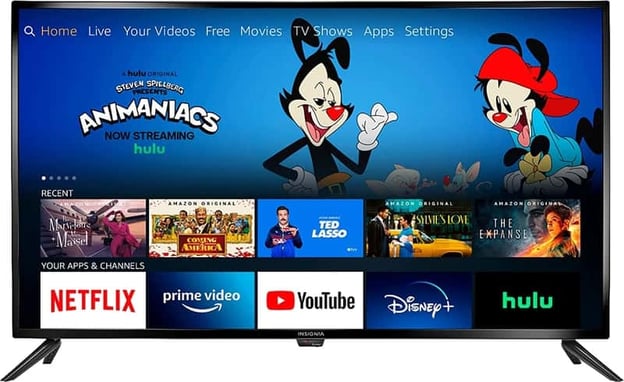
This is among one of the most popular TVs on Amazon right now. It's a smart TV with built-in Fire TV capabilities, making it easy to broadcast your menu with Untappd for Business digital menu boards with an Amazon Fire TV Stick. And with a full HD experience that offers crystal-clear images in 1080p resolution, it’s one of the most affordable newer models of the year.
Price: $239.99
SAMSUNG 40-inch Class LED Smart FHD TV 1080P (UN40N5200AFXZA, 2019 Model)
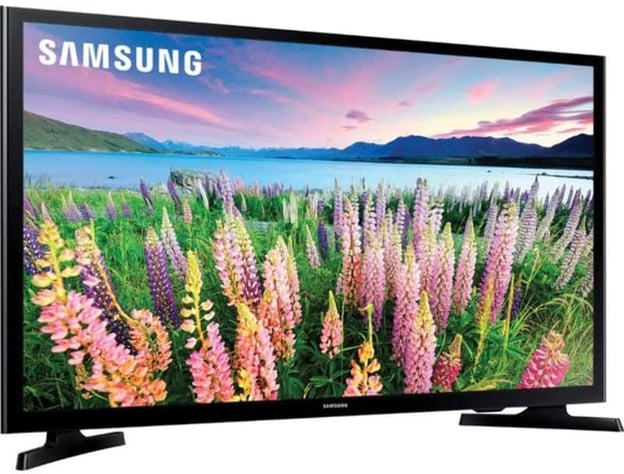
This Samsung is nearly identical to the New Insignia, but with a few extra bells and whistles. Samsung’s Full HD 1080p resolution guarantees a viewing experience with two times the clarity of standard HD TVs. Additionally, their Micro Dimming Pro feature reveals a more true-to-life picture with enhanced contrast. Lastly, the PurColor experience promises to deliver natural colors and crisp details. If you’re displaying images of beer or food, this could be a great option.
Price: $239.99. Normally $299.99 but on sale right now on Amazon.
TCL 43-inch 4K UHD Smart LED TV - 43S435 (2021 Model)
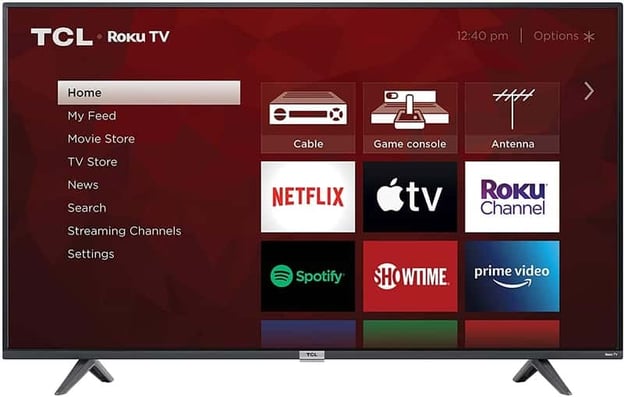
We know we said that 4K resolution doesn’t matter. But you’d be hard pressed to find another TV for under $350 bucks that delivers the brightest, crispest, most lifelike picture in such a sleek design. With a thin bezel to maximize the amount of space you can use to display your menu board, this TV is our stretch option. You’ll have to decide if the modern design and upgrade in picture quality are worth the higher price.
Price: $348.00
If you’re still tuned in...
Whichever TV you choose, make sure that you choose the right menu software to showcase all of your beers on tap or food for purchase. With Untappd for Business, you can easily create custom-designed menus from our database of over two million beers or have our team on hand craft one for you at no extra cost.
7 days Free - Untappd For Business
More than 20,000 venues around the world use Untappd for Business for menus, analytics, and promotion of their venue.
Schedule a demo or start your 7 day free trial – no credit card required.
